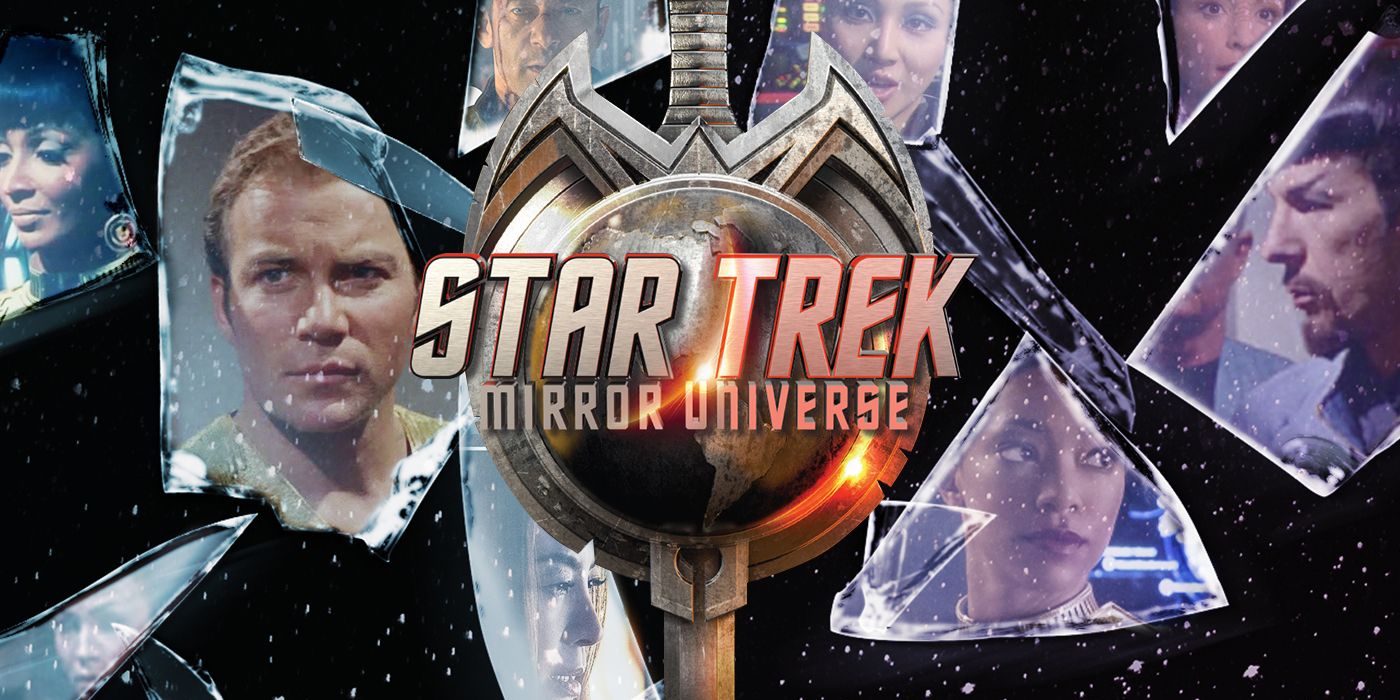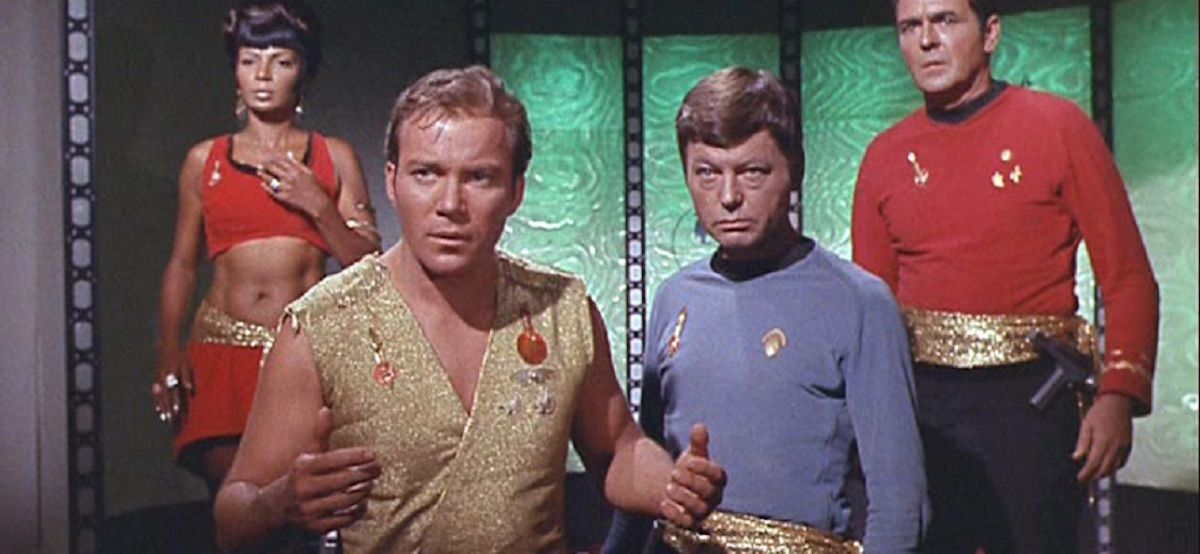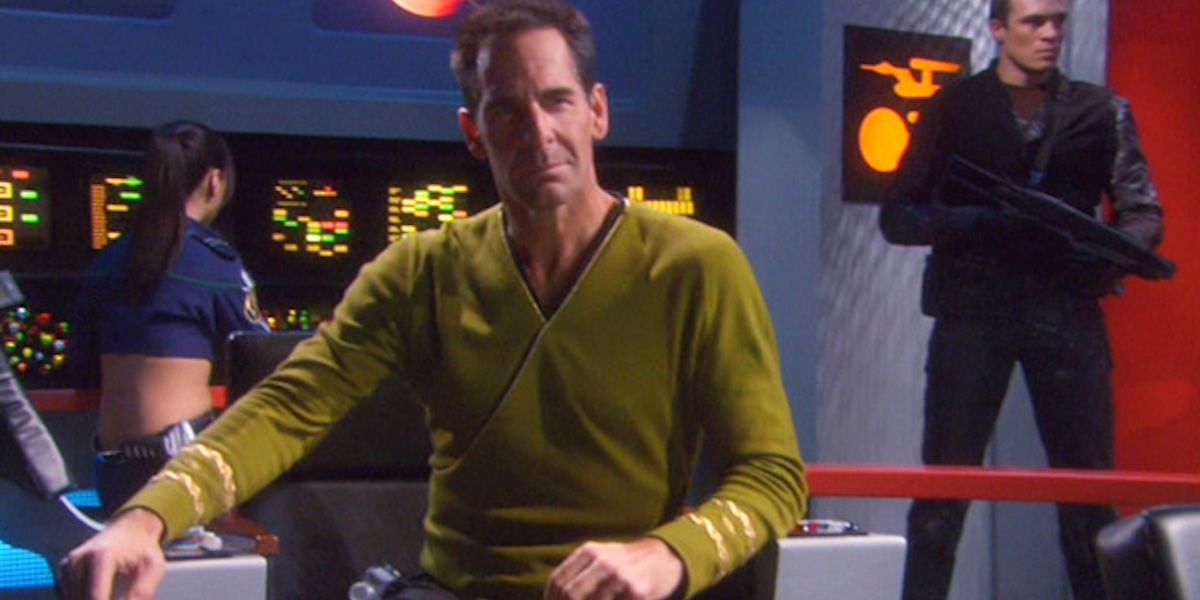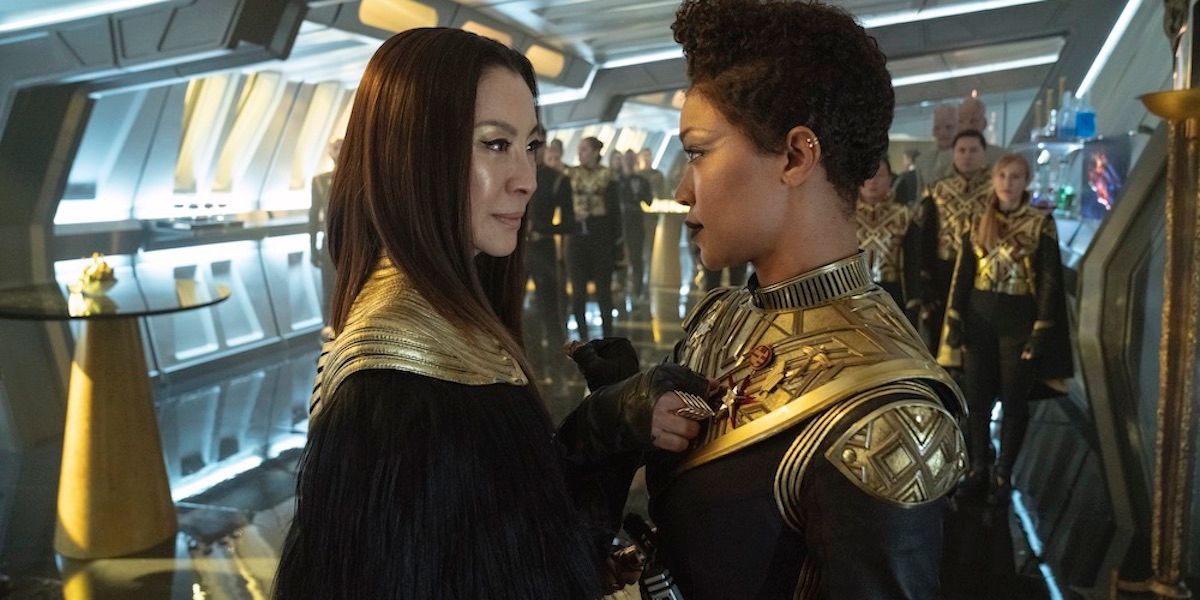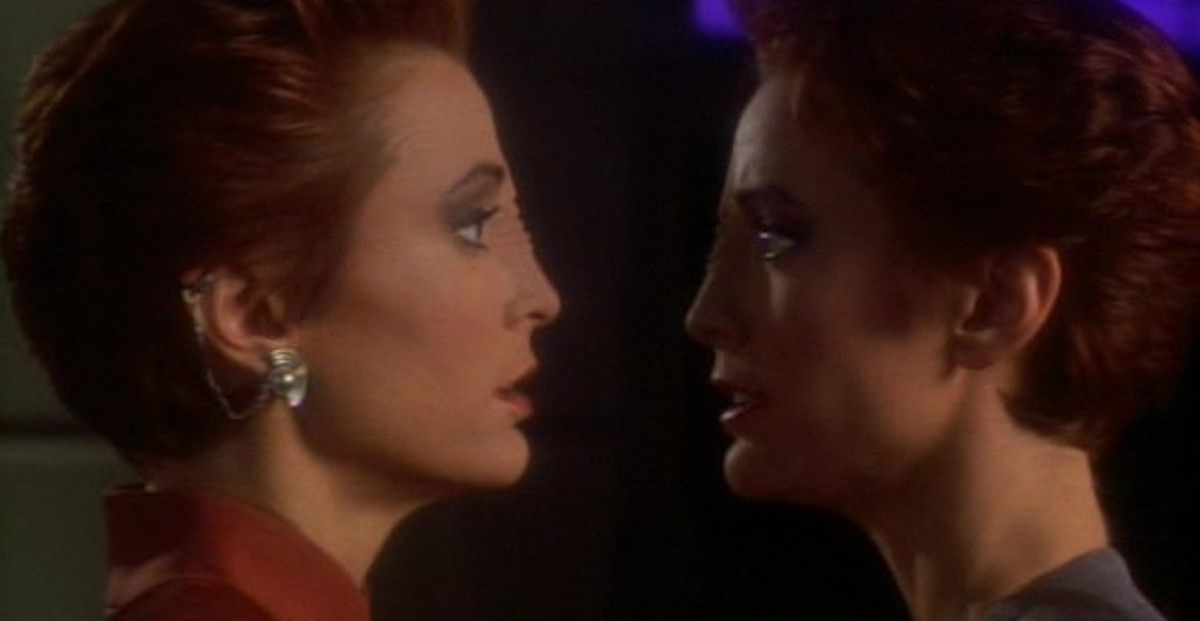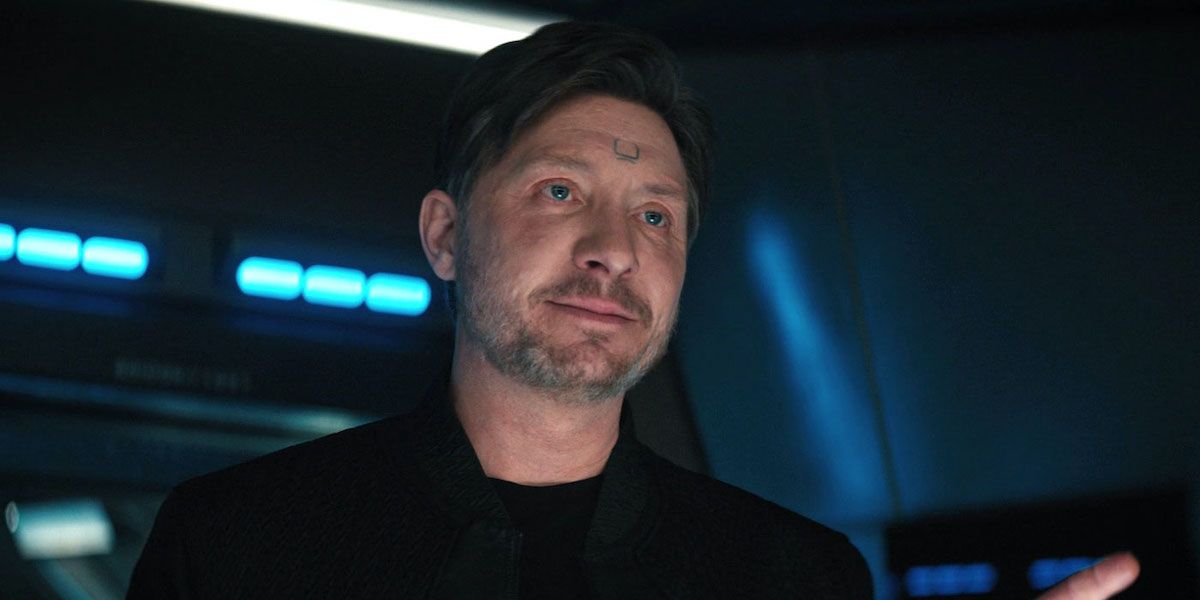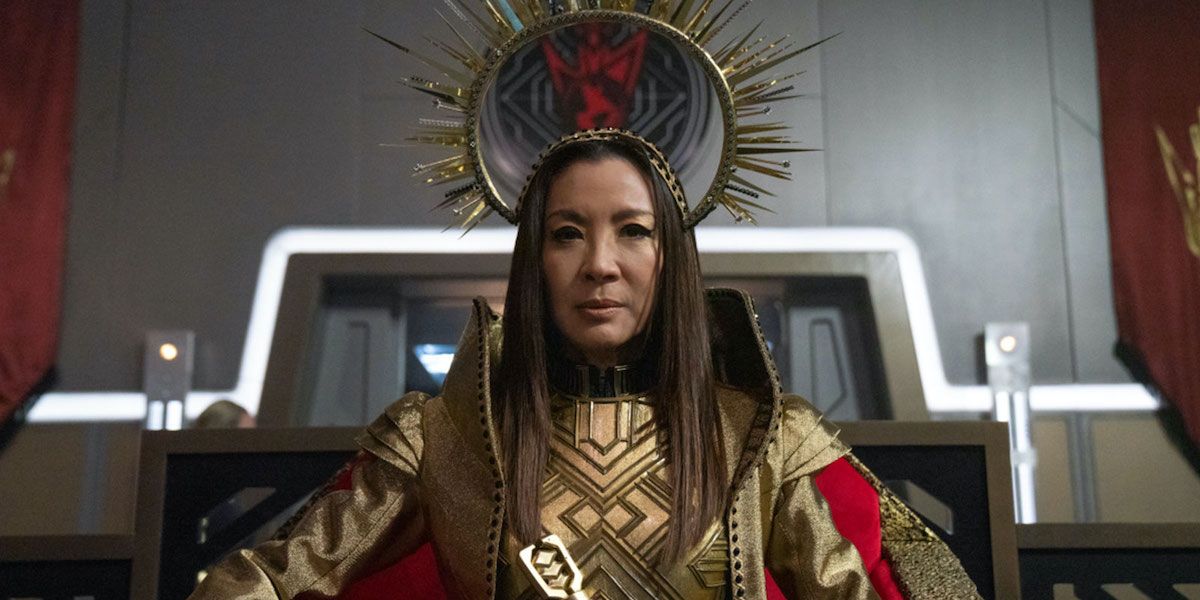Star Trek's Mirror Universe is one of the franchise’s most fascinating and unique elements. Beyond the rich storytelling opportunities, Trek's forays into the darker alternate universe lets the cast of the various Trek series explore new aspects of their characters in ways they seem to relish. Star Trek: Discovery in particular leaned into this aspect of the Trek multiverse throughout its first three seasons, with that dark alternate reality proving integral to the overarching narrative.
With the upcoming second season of Star Trek: Picard taking place entirely within some kind of dark alternate reality thanks to the returning Q (John DeLancie), let's take a look at Star Trek's Mirror Universe, how the various series in the franchise have explored it, and the ways Discovery has expanded and changed the way the franchise interacts with alternate realities.
Hail to the Emperor
Trek’s Mirror Universe debuted in the original series Season 2 episode “Mirror, Mirror.” One of those pesky transporter anomalies sends Captain Kirk (William Shatner), Dr. McCoy (DeForrest Kelley), Lt. Uhura (Nichelle Nichols), and Mr. Scott (James Doohan) onto the “ISS Enterprise,” which exists in a darker parallel universe. In this world, Kirk won his ship by assassinating his predecessor Captain Pike, and the United Federation of Planets doesn’t exist.
Fans familiar with Discovery’s deep-dive into what is now called the Terran Empire will already know the traits of this Mirror Universe. Earth is the center of a fascist, xenophobic imperial regime which stands for the opposite of the Federation’s values. The crews of the Terran ships live in a constant state of mutual hostility, as the only way to get ahead is to brutally murder your shipmates.
Technically, the Mirror Universe was not seen again until Star Trek: Deep Space Nine. The chronology of the Trek universe(s) is more complicated, (perhaps unnecessarily so). While neither Star Trek nor The Next Generation ever explores the Mirror Universe again (the TNG episode “Yesterday’s Enterprise” comes close), the original series episode “The Tholian Web” (Season 3, Episode 9) features the disappearance of the USS Defiant, and connects the original series to Star Trek: Enterprise.
In a Mirror, Darkly
Enterprise was a Trek show which seemed like a good idea, but came at the wrong time. Enterprise awkwardly straddled Trek’s past and future, with its updated television production technology and promising opening seasons undercut by adhering to sexism in its content. In the wake of 9/11, Enterprise introduced a serialized storyline which followed the crew of the Enterprise as they travel across the known galaxy to hunt down a species called the Xindi, who in an unprovoked attack killed millions of people with a prototype weapon. Enterprise never quite captured the hearts and minds of its targeted fan base, and only hit its stride in its final season, with its two-part foray into the Mirror Universe, Season 4’s “In a Mirror, Darkly Parts 1 & 2” standing as perhaps the show’s finest achievement.
“In a Mirror, Darkly” notably does away with the Prime Universe characters entirely, focusing on the Terran Empire’s flagship, led by Captain Forrest (Vaughn Armstrong, whose counterpart character Admiral Forrest had been killed earlier in the season), and Commander Jonathan Archer (Scott Bakula). When the frustrated Archer suggests that the ISS Enterprise should invade Tholian space after hearing rumors of a new technology that they could steal for themselves, Forrest shuts him down. Archer takes command and invades Tholian space. They discover that the USS Defiant, the ship from the original series episode “The Tholian Web,” has somehow appeared in their reality, from over 100 years in the future.
Chronologically speaking, “In a Mirror, Darkly” is the first crossover between universes, with those events preceding Star Trek: Discovery’s bold immersion into the Mirror Universe in its first season.
The Dark Side of Disco
Discovery’s first season divided many long-time Trek fans, even as it quickly became the biggest streaming show in the world at that time. Putting Trek back on TV where it (arguably) belongs, Discovery explored the decade preceding the original series, centering on Spock’s adopted sister, a human named Michael Burnham (Sonequa Martin-Green). After defying her commanding officer and surrogate mother, Captain Phillipa Georgiou (Michelle Yeoh), and ordering a preemptive strike in an attempt to stop a war with the Klingons before it starts, Burnham loses her commission. After a stint in prison, Burnham lands on the USS Discovery, a ship containing an experimental mycelium spore drive, which can theoretically “jump” anywhere in an instant.
Well into Season 1, Discovery surprised everyone and wound up in the Mirror Universe for a 6-episode arc. We learn that the Terran Empire is ruled by Empress Philippa Georgiou, and that the Mirror Burnham has been plotting to take over with the help of her lover, Discovery’s Captain Gabriel Lorca (Jason Isaacs). The person we thought was the Prime Universe Lorca had been the Mirror Universe Lorca for quite some time, having crossed over and killed his doppleganger before Burnham joined the crew.
Discovery spends more time in the Mirror Universe than any other entry in the franchise, establishing the widespread use of the torture device known as the Agonizer, which the Mirror Enterprise’s Dr. Phlox (John Billingsly) and Malcolm Reed (Dominic Keating) developed in that show’s “In a Mirror Darkly” episode. Beyond allowing the cast to indulge in their vampy tendencies (and they’re clearly having a ball, no matter which series we’re talking about), Discovery takes these character relationships to new levels.
The mother-daughter dynamic between Burnham and Georgiou plays out in fascinating ways as the Mirror Georgiou ends up in the Prime Universe (where her counterpart is now long dead, having perished at the Battle of the Binary Stars early on). Mirror Georgiou — who still thinks of herself as an Emperor — joins Section 31, the Federation secretive black ops and security intelligence organization.
Deep Space Nine
Within the Prime Universe chronology, the two universes stay separate until Star Trek’s “Mirror, Mirror,” which ends with Mirror Spock helping the Prime Enterprise crew return to their reality. Kirk's description of the Federation inspires Spock, who vows to try and change things for the better. We learn how that all went over the course of five separate episodes of Star Trek: Deep Space Nine.
In Season 2, Episode 23, "Crossover," Dr. Bashir (Alexander Siddig) and Major Kira (Nana Visitor) find themselves in the Mirror Universe after a botched trip through the wormhole from the Gamma Quadrant. Known here as Terek Nor, DS9 is run by Intendant Kira (Visitor has a high time playing her evil self, as does the rest of the cast), who is fascinated by their appearance but not terribly surprised. One hundred years after Spock inspired an uprising against the Terran Empire, an alliance of Klingons, Cardassians, and Romulans finally overthrew the oppressive regime, and installed a whole new one. "Terrans" are now slaves, and by the end of the episode, Mirror O'Brien (Colm Meany) and the roguish pirate Mirror Sisko (Avery Brooks) have begun their own rebellion against the Alliance.
The Mirror Universe episodes appear every few seasons on Deep Space Nine, growing steadily campy with each installment. With each new crossover, we learn that the Rebellion has progressed a bit further. The storylines include Mirror O'Brien kidnapping Prime Sisko, who must impersonate the suddenly-killed Mirror Sisko and help save Mirror Jennifer Sisko (Felecia M. Bell), who died at Battle of Wolf 359 against the Borg in the Prime Universe. Mirror Jennifer then turns around and kidnaps Sisko's son Jake (Cirroc Lofton), to compel him to help complete plans for a Mirror version of DS9's battleship, the Defiant. The final entry sees Quark (Armin Shimmerman) and Nog (Max Grodénchik) pursue their kidnapped Grand Nagus (the President of Capitalism, as far as the Ferengis are concerned) into the Mirror Universe. The episode ends with the Regent of the Alliance — Mirror Worf (Michael Dorn) — surrendering to the Rebellion.
This is as far as Trek has gone into the "present" of the Mirror Universe. Given this final episode's dismal reception, the Deep Space Nine Mirror Universe excursions might remain odd outliers for the foreseeable future.
Parallel Lives
Seven episodes into Season 4, Discovery returned to the parallel dimension trope, with the brash Risan scientist Dr. Ruon Tarka (Shawn Doyle) claiming to hail from yet another alternate universe. Season 4 of Discovery revolves around a phenomenon known as the Dark Matter Anomaly (or DMA), which is an enormous field of dark matter floating through the galaxy and annihilating everything in its wake — including Cleveland “Book” Booker’s (David Ajala) home planet.
Initially thought to be a naturally-occurring phenomenon, the DMA’s behavior — disappearing and then reappearing at a different place in the galaxy seemingly of its own accord — proves that some unknown intelligence controls it. The Federation names this intelligence Unknown Species 10-C, and their unknown intentions are deemed sufficiently threatening to convene a council and hash out a plan. The delegates are evenly split between deploying Tarka’s device designed to destroy the DMA or find a way to make a peaceful first contact. Burnham narrowly wins a debate with Book, who then joins Tarka in going rogue.
Tarka and Book steal a prototype spore drive, intent on destroying the DMA before Discovery can make first contact. We learn that Tarka formed a special bond with a fellow scientific genius while they were both held prisoner by the Emerald Chain. They developed an inter-dimensional transporter together, but were separated before they could use it to escape. Tarka's goal and hope is to meet him again in what we can only guess is a parallel universe. Is this the J.J. Abrams Kelvin Universe (which was made canon in a previous episode of Discovery)? Is there a rare place in the Mirror Universe with a soft landing? It's anyone's guess, but there could also be yet another universe within the Discovery continuity we have yet to see.
The Guardian of Forever
The two-part "Terra Firma" episode from Discovery's third season finds Georgiou dying from cellular decay due to how long she's been away from her universe. The key to her recovery lies on a barren, snow swept world, where they find a fella named Carl (Paul Guilfoyle) and a free-standing door. Georgiou goes through and finds herself back in the Mirror Universe, on the day Mirror Michael Burnham tried to kill her and take over the Empire. Can Georgiou change her fate, and even heal her broken relationship with her adopted daughter?
The kicker, as any giddy Trekkie can tell you, is that Carl turns out to be the personification of the Guardian of Forever, the mysterious portal to everywhere featured in the original series' (arguably) greatest episode. Carl cannot heal Georgiou, and can't send her back to her universe. What he can do is send her back to a time before the Prime and Mirror Universes were separated.
This presents a whole host of new questions: Wouldn't Georgiou's presence create a whole new timeline (and thus universe)? How were the universes separated, and when did this happen? The creative minds behind Discovery and the other current iterations of Star Trek appear to be playing a long game.

